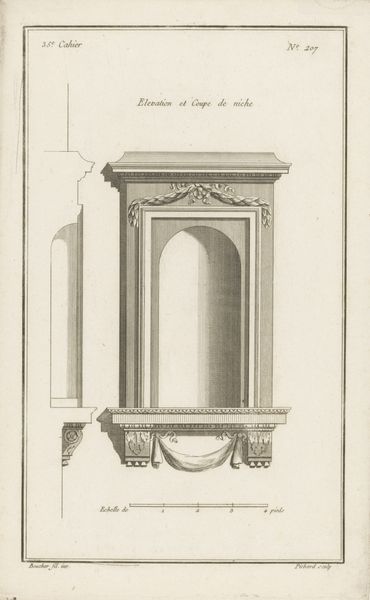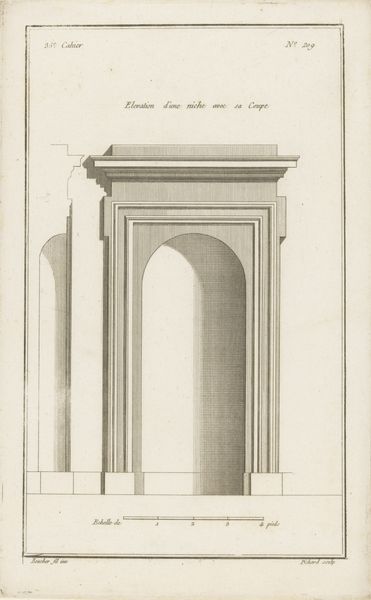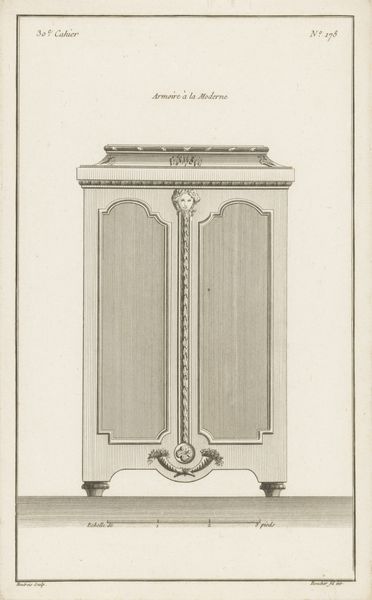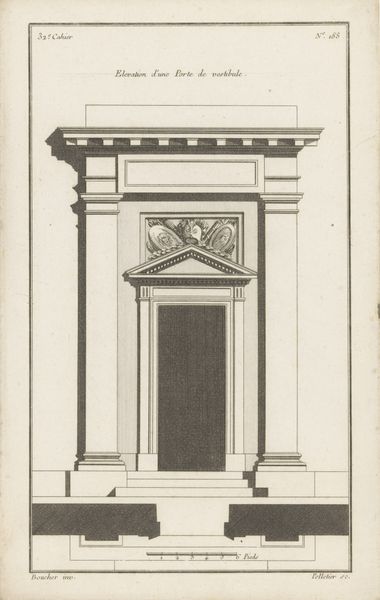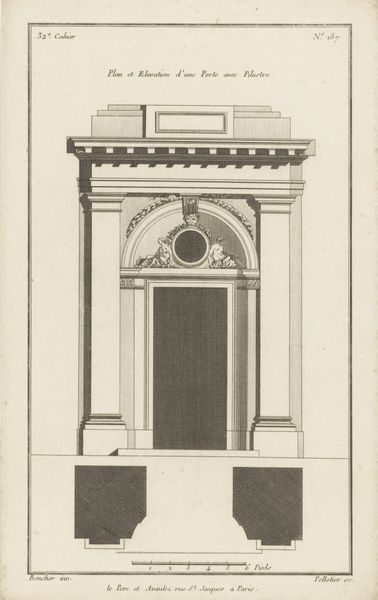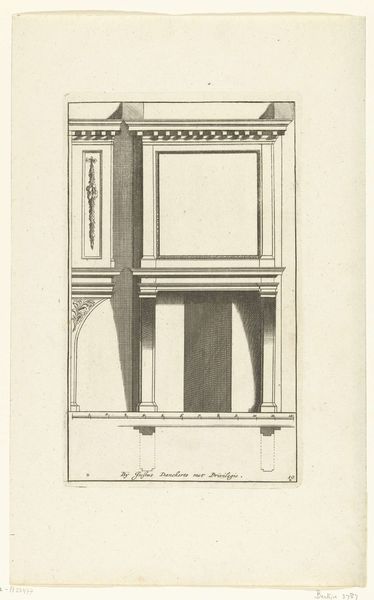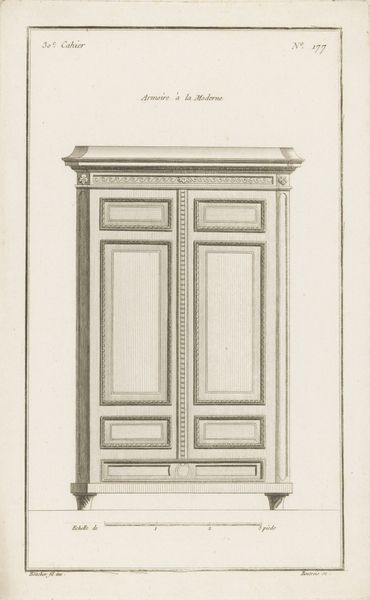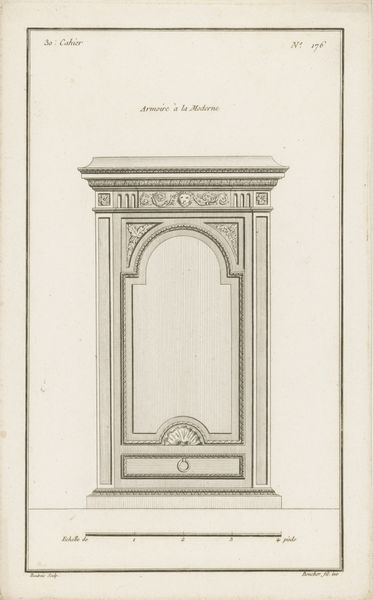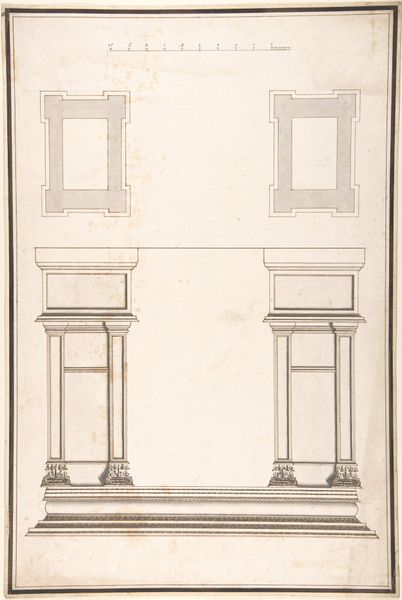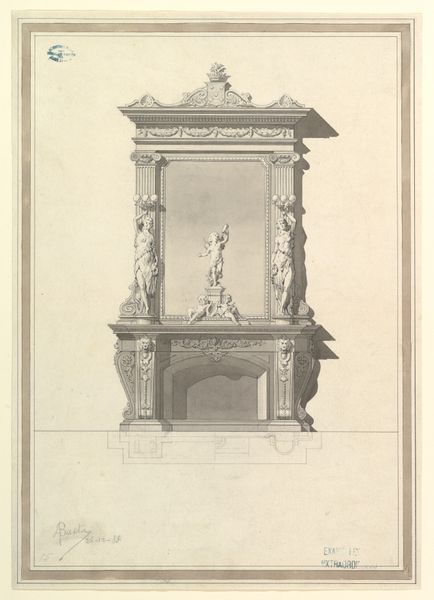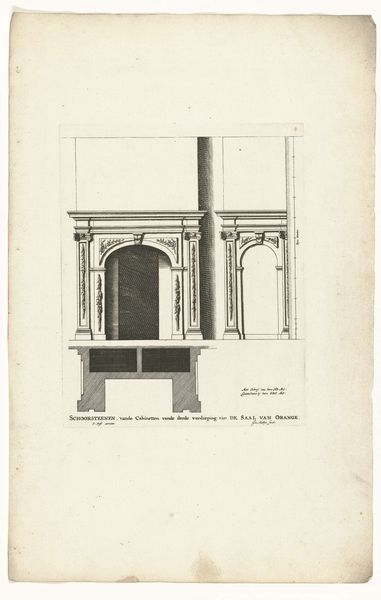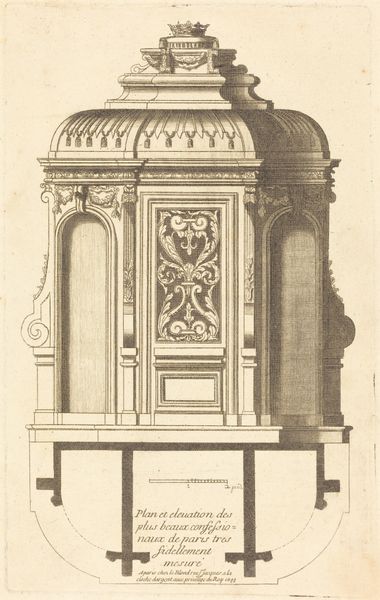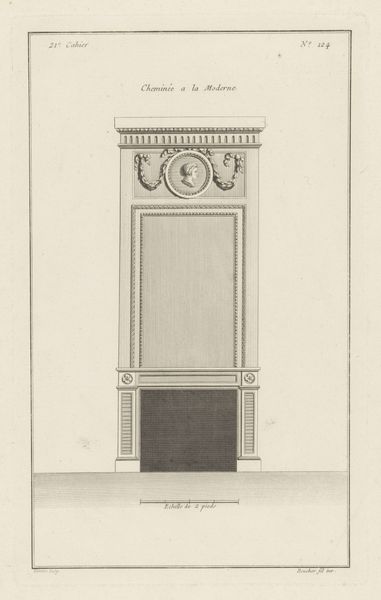
drawing, paper, engraving, architecture
#
drawing
#
neoclacissism
#
paper
#
form
#
geometric
#
line
#
academic-art
#
engraving
#
architecture
Dimensions: height 329 mm, width 203 mm
Copyright: Rijks Museum: Open Domain
Curator: This engraving by Jean-Baptiste Bichard, created sometime between 1772 and 1779, is titled "Nis met guirlandes," or "Niche with garlands." It’s currently held at the Rijksmuseum. What are your initial impressions? Editor: Clean lines. There is a sense of precise geometry and cool formality. It's meticulously rendered, but the monochrome palette feels austere. The composition relies heavily on symmetry and sharp, delineating edges. Curator: It’s very much a product of its time – the Neoclassical period. Notice how Bichard meticulously renders this architectural element? It’s all about clarity and order, reflecting the Enlightenment ideals of reason and structure. The engraving medium itself lends to that sense of precision, allowing for fine lines and a detailed depiction. Editor: Yes, the line work is incredible. The geometric arrangement, coupled with these botanical elements, creates a visually harmonious schema. There’s something pleasing about how the roundness of the garlands juxtaposes with the severe rectilinearity of the niche itself. Curator: Exactly! These design elements had social implications at the time, with its emphasis on simplicity. There was a broader movement against the perceived excesses of the Rococo period, which was embraced by certain institutions. “Nis met guirlandes” represents a desire for order and rationality in both art and society. Editor: One could also interpret the subject matter itself as a nod to classical antiquity. Niches were architectural features prominently featured in Roman and Greek buildings, therefore we observe how this connects Bichard’s work to broader cultural traditions and artistic lineages. Curator: Certainly. The very act of depicting this architectural niche in such a detailed and academic manner underscores the values placed on classical learning and artistic skill. It shows an architectural design gaining traction, thus being showcased for public learning and perhaps influencing the design of governmental architecture. Editor: And it’s amazing that an engraving on paper, primarily through the manipulation of line, shape, and form, manages to create an illusion of three-dimensionality. We could dissect further to address spatial properties and optical nuances but alas, our time is near up. Curator: True. Overall, Bichard’s engraving offers us a glimpse into the aesthetic and intellectual climate of the late 18th century. Editor: It presents an intersection between form, function, and philosophy—one perfectly encapsulated within the lines of a single print.
Comments
No comments
Be the first to comment and join the conversation on the ultimate creative platform.

